(NB&CL) Geopolitical upheavals, armed conflicts, post-pandemic economic crises, climate change and the right-wing wave are paving the way for a strong rise in protectionism, making the trade war deeper in 2024 and possibly increasing on a global scale in 2025.
Three economic superpowers compete fiercely
According to the Peterson Institute for Economic Research (USA), one of the world's top 20 consulting organizations, global economic growth is expected to continue at the current rate of 3.2% in 2025. But geopolitical factors, including potential changes in US economic policy, will pose risks to the forecast. Most notably, changes in tariffs and industrial policies in the US, China and the European Union (EU) - three economies that account for 42% of total global import and export turnover.
The world’s three dominant economies are entering a new phase of confrontation, increasingly using trade weapons borrowed from their competitors. That threatens to deepen international rifts and challenge decades of world trade guided by free-market principles.
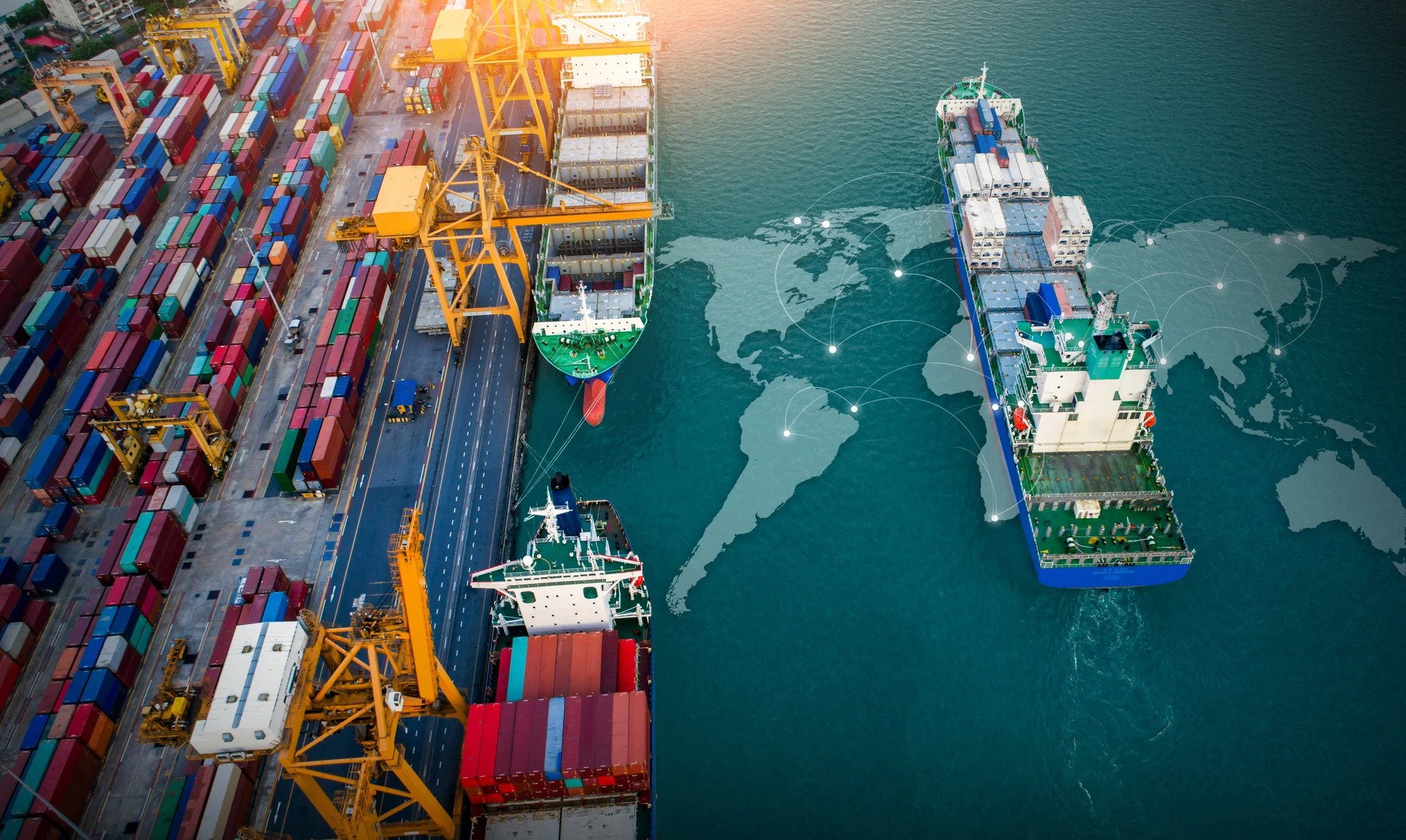
Geopolitical tensions have intensified the trade war. Photo: GI
Seven years ago, the US-China trade war officially broke out when the then-White House leader, President Donald Trump, decided to impose a tax of up to 25% on about 350 billion USD worth of Chinese goods exported to the US. In response, China also imposed new, higher taxes on many important US goods exported to the mainland.
Since then, the escalation of tensions between the world’s two largest economies has crossed the border, strongly affecting the global economy. Currently, the risk of a new trade war has also increased because not only China and the US but also the EU have joined in and are both considering the use of tariffs as the top “weapon” in their efforts to protect their goods.
In the US, President-elect Donald Trump has announced a new policy of imposing a 25% tariff on all goods from Mexico and Canada, and an additional 10% tariff on imports from China, bringing the tariff to 60%. Mr. Trump is also considering imposing a larger tariff on cars from the European Union, a move that could cost the bloc millions of cars in annual sales.
In response to the US move, China has signaled that it is ready to impose tariffs of up to 25% on imported cars from the US. But Beijing also has to deal with another threat from Europe. The EU, after concluding an investigation into electric vehicle subsidies, has imposed tariffs of up to 35.3% on electric vehicles imported from China, applicable for five years.
In response to threats from the EU to target its auto industry, China announced it would begin collecting temporary anti-dumping duties of 30.6% to 39% on the bloc’s spirits, mainly French cognacs, a move reminiscent of Beijing’s 218.4% tariffs on Australian wine three years ago, which cost the country more than $1 billion a year.
Tariffs and protectionism are on the rise
In the face of the back-and-forth, both the EU and China have filed complaints with the World Trade Organization (WTO) and have also entered into negotiations with each other. However, electric cars and spirits are only a small part of the problem, as protectionism is becoming increasingly mainstream in China, Europe and North America. Across the 27 capitals of the EU, calls for protectionism are growing louder.
Mario Draghi, former president of the European Central Bank, recently called for the bloc to protect its industry to avoid falling further behind in the race with US and Chinese manufacturers. “Other regions are no longer following the rules and are actively introducing policies to improve their competitive position,” he declared.
The average global tariff rate has fallen from around 22% in 1990 to around 6% in 2022, but trade interventions in the form of non-tariff measures and subsidies have increased. According to research by NatWest Group, a financial group based in London (UK), the number of interventions restricting trade in goods globally has soared from around 200 in 2009 to nearly 12,000 in 2024.
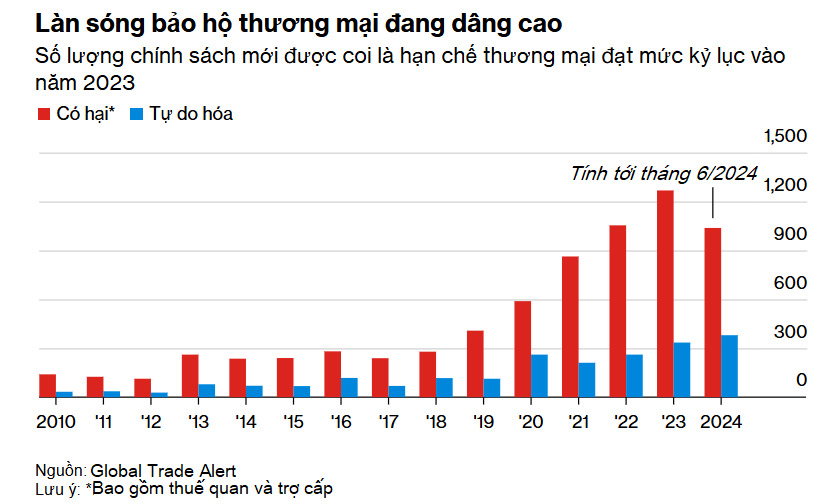
Moreover, the scope of these restrictions has expanded from traditional sectors such as metals and agriculture to strategic sectors such as automobiles and semiconductors. And protectionism is also taking new forms. Many governments are allocating “green” subsidies to encourage the reshoring of manufacturing in key industries and reduce dependence on imported technologies and inputs.
Recent examples include the US “Deflator Act” and Europe’s “Green Deal”, as well as environmental measures in trade policy reviews that have nearly doubled in the past decade, creating a new wave of “green protectionism”.
These developments, combined with geopolitical tensions that have disrupted shipping lanes and posed risks to maritime trade and global supply chains, have reduced world trade volume growth. From an average annual increase of 5.8% in the early 2000s, global trade volume has grown by just 1% in recent years.
These rather pessimistic figures also reflect the increasing number of tariff barriers, with more to come. And it can be said that no side will really win in the global trade war. In fact, countries facing tariffs, including the US, have experienced declines in exports and GDP. Other countries have also been indirectly affected through weaker demand for their own exports.
Nguyen Khanh
Source: https://www.congluan.vn/cuoc-chien-thuong-mai-va-chu-nghia-bao-ho-ngay-cang-sau-sac-va-lan-rong-post327790.html


![[Photo] Prime Minister Pham Minh Chinh launched a peak emulation campaign to achieve achievements in celebration of the 14th National Party Congress](https://vphoto.vietnam.vn/thumb/1200x675/vietnam/resource/IMAGE/2025/10/5/8869ec5cdbc740f58fbf2ae73f065076)



![[Photo] Prime Minister Pham Minh Chinh chairs the Government's online conference with localities](https://vphoto.vietnam.vn/thumb/1200x675/vietnam/resource/IMAGE/2025/10/5/264793cfb4404c63a701d235ff43e1bd)

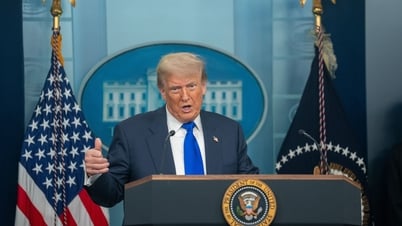

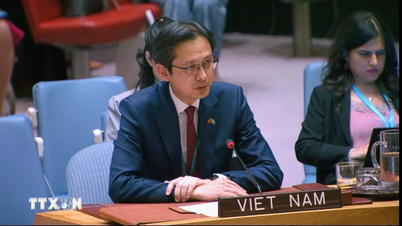




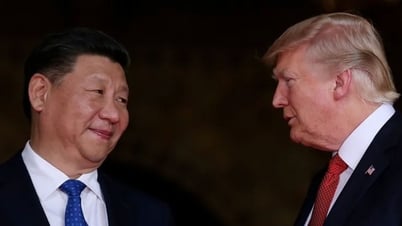













































![[VIDEO] Summary of Petrovietnam's 50th Anniversary Ceremony](https://vphoto.vietnam.vn/thumb/402x226/vietnam/resource/IMAGE/2025/10/4/abe133bdb8114793a16d4fe3e5bd0f12)

![[VIDEO] GENERAL SECRETARY TO LAM AWARDS PETROVIETNAM 8 GOLDEN WORDS: "PIONEER - EXCELLENT - SUSTAINABLE - GLOBAL"](https://vphoto.vietnam.vn/thumb/402x226/vietnam/resource/IMAGE/2025/7/23/c2fdb48863e846cfa9fb8e6ea9cf44e7)

















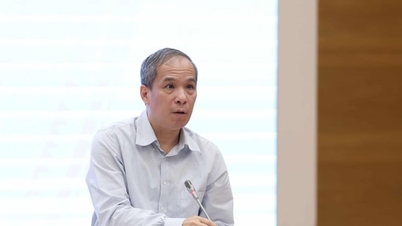





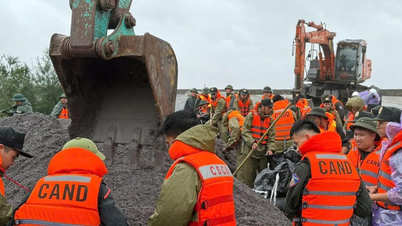












Comment (0)